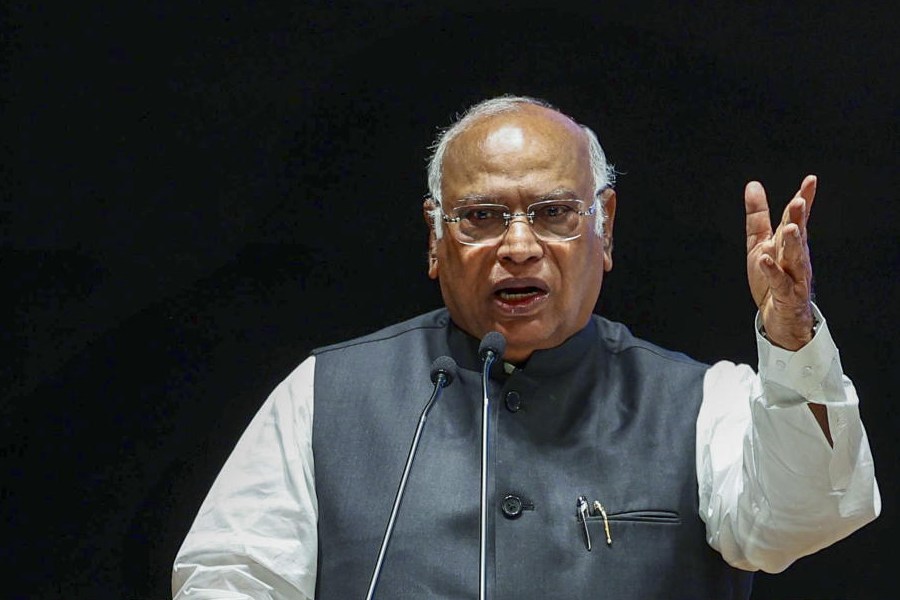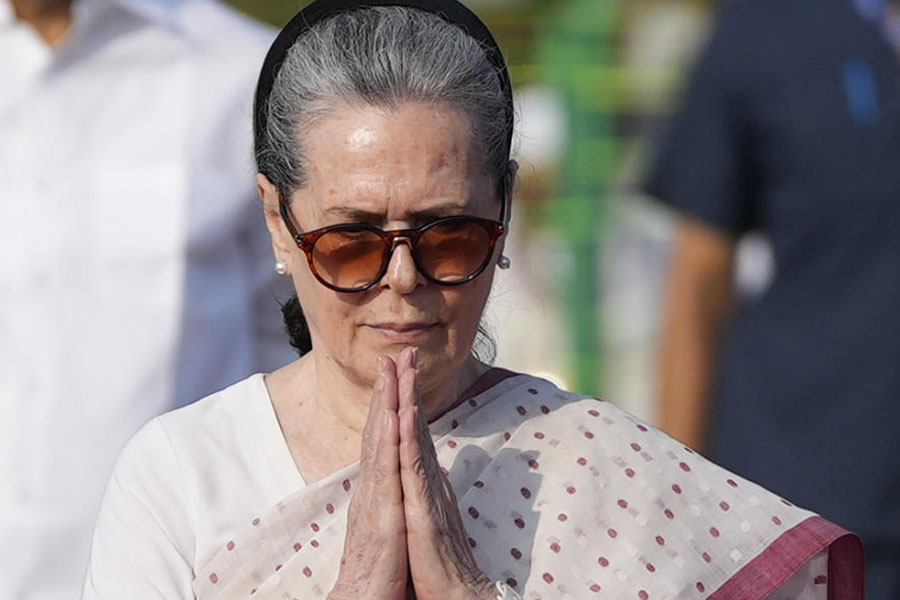Hawal Chowk in downtown Srinagar has multiple names. Officially, it's known as Mirza Kamil Sahib Street. But Kashmiris have another name for it — they call it Biharee Chowk.
Every morning, the place mills with migrant labourers looking for work. You can see them squatting on the streets leading to the chowk, with their concrete mixing machines, and painting, masonry and carpentry equipment.
Mason Mohammed Amir, 48, has been going to the chowk for 12 years. 'There's hardly been a day when I have returned home without work,' says Amir, sitting in a small room in a workers' ghetto behind the chowk.
Amir likes to work in Kashmir because he earns more there than he would in other states. Last year, he sent Rs 40,000 back to his village in Bihar where his wife and daughters live. Skilled workers earn Rs 400-500 a day; unskilled workers Rs 150-250. Most workers say that they get work for at least 20 days a month.
But there's trouble brewing. Recently, separatist leader Syed Ali Shah Geelani urged Kashmiris not to rent their premises to migrants. In 2008, his statements against migrants had been followed by a grenade attack on a migrant family in Srinagar, leading to an exodus of workers.
'I hope things don't go out of hand this time,' Amir says.
Conservative estimates put the migrant labour population at around four lakh — slight when compared with the 10 crore migrant workers spread out across India. Even a small state like Kerala attracts more than 25 lakh workers. But the ratio of migrants to locals in Jammu and Kashmir is one million to about 12 million — higher than that in many other states.
According to a study conducted by Bashir Ahmad Dabla, head of sociology, University of Kashmir, and his team late last year, about half the migrants are from Bihar, 15 per cent from Uttar Pradesh, and the rest from Gujarat, West Bengal and Rajasthan. Most migrants are Muslims.
'The locals treat us very well,' says labour contractor Nizamuddin Haq, originally from Patna. 'But a handful of people can end up scaring many of us,' Haq says, adding that contractors have urged would-be migrants not to move to Kashmir this year.
Geelani smells a conspiracy. 'The Jammu and Kashmir government, in conspiracy with the Indian government, announced plans to regularise 20 colonies of migrants in Jammu. That is a naked attempt to change the population composition of the state. This could also happen in the Valley,' he says.
He also believes that the rise in the migrant population is leading to 'drugs' and 'immoral' activities such as prostitution and elopement. 'They can have a bad effect on our local culture,' he says. He even links the recent violence in Kishtwar with migrants. 'Much of the violence was led by non-state subjects who want to have a larger say in the affairs of the state.'
His thoughts are being echoed elsewhere. Student Abdul Samad thinks migrants are a 'nuisance' and act as informers for security forces. Grocery shop owner Ashfaq Ahmed is all for 'tough action' on the entry of migrants. 'Locals are idling away because of them. If Geelanisaab takes a hard stand, I'll be the first person to stop selling groceries to them,' he says.
Geelani believes that the government should declare the number of migrants in the state — and stipulate a period of stay. The state government says that's not possible.
-

MOVING NORTH: Mohammed Amir, from Bihar, with his son who joined him three months ago; (top) the Dal Lake
'People all over India are free to work anywhere. As for the numbering migrant labourers, we register only those who have a labour card issued by their state governments,' says Shahid Inayatullah, labour commissioner, J&K. Around 15,000 labourers are registered with the government.
Not many locals agree with Geelani either. 'Whether it's construction or carpentry, we simply cannot do without migrant labour. Construction of buildings, roads and brick kilns will come to a standstill if migrant workers leave,' says Basharat Ahmed Jhon, a cement shop owner in Zadibal and owner of a building where migrants stay. Jhon charges Rs 25,000 per room, shared by several workers, for nine months.
Migrants work in agriculture too. 'Our apple orchards and fields are completely dependent on migrants,' says Iqbal Tramboo of the Kashmir Economic Alliance, an association of traders, tour operators and hoteliers. 'Kashmiris of late haven't worked in blue collar jobs because of education and improvement in the economy,' he adds.
Migrants, clearly, have been lending a hand in Kashmir's rebuilding. 'As militancy decreased and the economy looked up, infrastructure projects came up and so did tourism,' explains Dabla. 'With money coming in, the demand for labour to build houses, etc. grew.'
Tramboo sees migrant labour entering factories in the coming years, while Dabla points out that workers have also started moving from cities to rural areas.
Locals fear that the presence of migrant workers can be used to pump up resentment because unemployment is high — government figures say six lakh people are jobless in the state.
Mohammed Mazammil Hussain of the department of sociology, Maulana Azad Memorial Post Graduate College, Jammu, stresses that there are not enough job opportunities for the young. 'You can't expect educated youth to take up masonry and carpentry,' he says.
Politicians hold that migrant labourers are here to stay. Bhim Singh of the Panthers Party pooh-poohs Geelani's arguments about migrants affecting local culture. 'Kashmir's unique culture has survived the Mughals and other invaders for centuries. How can a few lakh labourers influence it,' he asks.
Javed Mustafa Mir, MLA and leader of the People's Democratic Party, however, stresses that land laws should be respected. 'We should not play politics in the name of migrant labour,' he says.
Some issues, locals say, need to be addressed. Though social tensions between locals and migrants are almost non-existent, Dabla points out that the migrants have not assimilated with the locals despite living there for years. 'They have their own style of living and food habits and they limit themselves to their own areas. The only place where they really meet the locals is at the mosque where many of them pray,' he says.
There have been some instances of local girls eloping with migrant men, but Dabla — whose book Migration Trends and Population Changes in Jammu and Kashmir will soon be out — says such cases have been dealt with competently by the local authorities.
According to the Zadibal Police Station, around which some 5,000 migrants live, cases involving migrants relate to drunken brawls and pickpocketing. 'We had only two cases of elopement in the last one year and these had led to some tension. But if we receive 100 complaints in a month, only 8-10 pertain to migrant workers,' says Tanvir Ahmed, station house office, Zadibal Police Station.
Yet, rues brick kiln worker Ramakant Yadav, there is tension in the air. He adds that workers have been asked by contractors not to indulge in activities that could provoke leaders such as Geelani into launching a movement.
Sajjad Hussain, co-ordinator with Aman, a charitable trust, believes that's unlikely. He jokes that it's only during India-Pakistan matches that there is banter between migrants and locals. 'Most migrants support India. And you know whom most Kashmiris support just for spite,' he laughs.
One issue that troubles Kashmiris is the rise in begging. 'Begging on the streets is an eyesore. And it is only done by migrants,' says Manzoor Butt, a Srinagar trader.
Meanwhile, as the spotlight falls on workers, they have been keeping their heads low, and hoping that nothing breaks the peace.
Amir's hopes lie with his son, six-year-old Ashraf, who came to Srinagar from Bihar three months ago and now studies in a government school. 'I want him to concentrate on his studies. God willing, he will not do what I do for a living,' he says.
Class concerns
46 per cent of migrants in J&K are from Bihar, 15 per cent from Uttar Pradesh, 8 per cent each from Gujarat, Rajasthan and West Bengal
63 per cent is illiterate
17 per cent does masonry, 11 per cent carpentry,
8 per cent painting and 3.5 per cent hairdressing
28 per cent says there has been an overall improvement in lifestyle after coming to the Valley
62 per cent of the migrants earn Rs 5,000-15,000 a month
63 per cent says it has a positive relationship with the local community; 30 per cent says it has a negative relationship
4 per cent says there is exploitation; 48 per cent says there is no exploitation and 48 per cent chooses not to answer
1.60 per cent is involved in trade union activities












